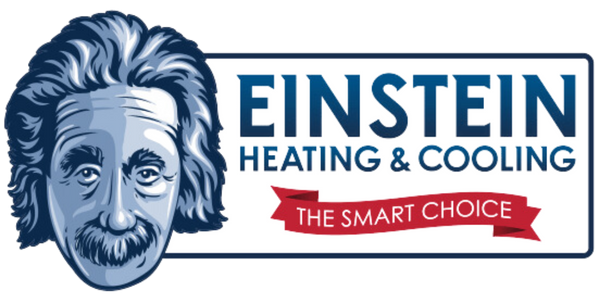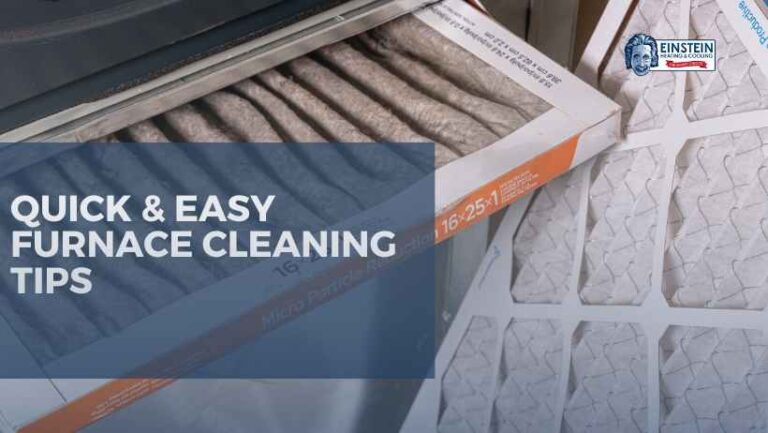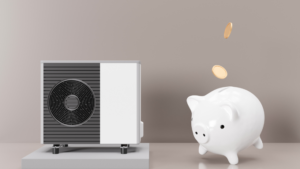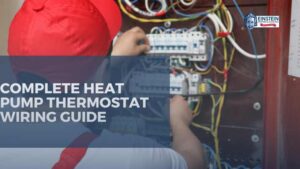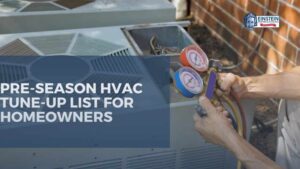Ensuring the optimal performance of your furnace is crucial for maintaining a comfortable and energy-efficient home. Regular furnace cleaning plays a pivotal role in achieving this goal. In this comprehensive guide, we will explore the various aspects of furnace cleaning and why it is essential for the longevity and efficiency of your heating system.
Factors Influencing Furnace Cleaning
1. Importance of Regular Maintenance
Regular maintenance is the cornerstone of a well-functioning furnace. Neglecting this aspect can lead to a decline in efficiency, increased energy consumption, and even potential safety hazards. Here are some key factors related to regular furnace maintenance:
Inspection of the Heat Exchanger
The heat exchanger is a critical component of your furnace. Regular inspections can help identify cracks or damage, preventing the release of harmful gases into your home.
Checking and Replacing Air Filters
Dirty or clogged air filters can impede airflow, reducing the efficiency of your furnace. Regularly checking and replacing air filters is a simple yet effective way to ensure optimal performance.
Lubrication of Moving Parts
Proper lubrication of moving parts reduces friction, preventing premature wear and tear. This step is essential for maintaining the efficiency and longevity of your furnace.
2. Impact on Energy Efficiency
A clean furnace operates more efficiently, translating into energy savings and a reduced environmental footprint. Let’s delve into the key factors influencing energy efficiency in furnace cleaning:
Efficient Heat Transfer
Accumulated dirt and debris on the heat exchanger can hinder heat transfer. Regular cleaning ensures that heat is efficiently transferred, minimizing energy wastage.
Improved Airflow
Clogged air filters and ducts can restrict airflow, making your furnace work harder to maintain the desired temperature. Cleaning these components enhances airflow, promoting energy efficiency.
Reduced Energy Consumption
An efficiently running furnace requires less energy to produce the desired amount of heat. Regular cleaning contributes to reduced energy consumption and lower utility bills.
3. Ensuring Indoor Air Quality
Furnace cleaning is not only about maintaining the appliance itself but also about ensuring the quality of the air circulating within your home. Here’s why indoor air quality is closely tied to furnace cleanliness:
Removal of Dust and Allergens
Over time, dust, allergens, and pollutants can accumulate in your furnace and ductwork. Cleaning these components helps in removing these particles, contributing to improved indoor air quality.
Prevention of Mold Growth
Dark and damp environments within a furnace system can create an ideal breeding ground for mold. Regular cleaning prevents mold growth, safeguarding your indoor air quality and the health of your household.
Elimination of Unpleasant Odors
Accumulated dirt and debris in the furnace can produce unpleasant odors when the system is in operation. Cleaning the furnace components eliminates these odors, creating a more pleasant living environment.
4. Extending the Lifespan of Your Furnace
Investing time and effort into regular furnace cleaning can significantly extend the lifespan of your heating system. Let’s explore the factors that contribute to the longevity of your furnace:
Minimizing Wear and Tear
Clean and well-lubricated components experience less wear and tear, ensuring that your furnace operates smoothly for an extended period.
Prevention of Overheating
Accumulated debris can cause your furnace to overheat, putting excessive strain on its components. Regular cleaning prevents overheating, preserving the integrity of the system.
Timely Detection of Issues
Regular cleaning provides an opportunity to inspect your furnace for any signs of wear, damage, or malfunction. Timely detection allows for prompt furnace repairs, preventing minor issues from escalating into major problems.
5. Safety Considerations in Furnace Cleaning
Ensuring the safety of your home and its occupants is paramount. Cleaning a furnace plays a crucial role in mitigating safety risks associated with heating systems. Here are key safety considerations:
Carbon Monoxide Detection
A clean and well-maintained furnace reduces the risk of carbon monoxide leaks. Regular inspections and cleaning of the heat exchanger are essential for detecting and preventing this potentially lethal gas from entering your living space.
Avoiding Fire Hazards
Accumulated debris, especially near the burner assembly, can pose a fire hazard. Regular cleaning eliminates these risks, ensuring the safe operation of your furnace.
Compliance with Safety Standards
Regular furnace cleaning is not only a matter of personal safety but also a requirement for compliance with safety standards. Following recommended maintenance practices ensures that your heating system meets industry safety regulations.
6. Gathering Necessary Tools and Materials
Inspection of Cleaning Tools
Before starting the cleaning process, it’s crucial to ensure you have all the necessary tools. These may include a vacuum cleaner with a hose attachment, a soft brush, a screwdriver, and replacement air filters. Inspect your tools to make sure they are in good condition and ready for use.
Choosing the Right Cleaning Agents
You might need a furnace repair when things get tough. To prevent unnecessary furnace repairs, make sure to do regular maintenance such as furnace cleaning. Selecting the appropriate cleaning agents is essential to avoid damage to your furnace components. Mild detergents, non-abrasive brushes, and a damp cloth are often sufficient for cleaning purposes. Always check your furnace manufacturer’s recommendations for approved cleaning agents.
7. Shutting Down the Furnace
Turning Off the Power
Begin the cleaning process by turning off the power supply to your furnace. Locate the power switch or circuit breaker associated with the furnace and switch it off. This ensures your safety during the cleaning process.
Cooling Down the Furnace
Allow the furnace to cool down before starting the cleaning process. This is crucial to prevent burns or injuries. Waiting for at least 30 minutes after turning off the power allows the components to cool to a safe temperature.

8. How To Clean A Furnace
Removing Dust and Debris
Use a soft brush or a vacuum cleaner with a hose attachment to gently remove dust and debris from the exterior of the furnace. Pay special attention to vents, grilles, and the surrounding area. This helps maintain proper airflow and prevents contaminants from entering the system.
Wiping Down Surfaces
Dampen a cloth with a mild cleaning solution and wipe down the exterior surfaces of the furnace. Be cautious not to let any liquid enter the internal components. This step not only cleans the surfaces but also helps eliminate any lingering odors.
9. Cleaning the Air Filters
Locating and Accessing Air Filters
Identify the location of your furnace’s air filters. This is typically near the return air duct. Use your furnace manual if you are unsure about the filter placement. Once located, carefully remove the access panel or cover to gain access to the filters.
Inspecting and Replacing Air Filters
Inspect the condition of the air filters. If they are dirty or clogged, replace them with new ones. This simple step ensures proper airflow, reduces strain on the blower motor, and contributes to energy efficiency.
10. Cleaning the Blower Motor and Fan
Accessing the Blower Motor
Locate the blower motor within your furnace. This component is responsible for circulating air throughout your home. Refer to your furnace manual to identify the specific steps for accessing the blower motor.
Removing Dust and Debris
If you’re searching on how to clean a furnace, make sure to carefully inspect your furnace. Using a soft brush or a vacuum cleaner with a nozzle attachment, carefully remove dust and debris from the blower motor and fan blades. Be gentle to avoid damaging these components.
11. Cleaning the Heat Exchanger
Safety Precautions
Cleaning the heat exchanger is a critical step, but it requires caution. Ensure the furnace is cool, and wear protective gear, including gloves and safety glasses. If you are unsure about accessing the heat exchanger, consult an HVAC technician.
Gently Brushing and Vacuuming
Using a soft brush, carefully remove any accumulated dust or debris from the heat exchanger. Follow up with a vacuum cleaner to ensure all loose particles are removed. This helps maintain efficient heat transfer and prevents potential safety hazards.
12. Cleaning the Ductwork
Inspection of Ductwork
Inspect the ductwork connected to your furnace for any visible signs of dust, mold, or debris. If you notice significant contamination, consider hiring a professional duct cleaning service for a thorough cleaning.
DIY Duct Cleaning
For minor dust accumulation, you can use a vacuum cleaner with a duct cleaning attachment to remove debris. Ensure the vacuum cleaner has sufficient power to capture the particles without releasing them back into your home.
13. Reassembling and Testing
Putting Everything Back in Place
Once you’ve completed the cleaning process, carefully reassemble all the components. Ensure that no tools or materials are left inside the furnace, and all access panels are securely closed.
Powering Up and Testing
Turn the power supply back on and monitor your furnace for any unusual sounds or odors. This initial testing phase ensures that everything is functioning correctly after the cleaning process.
Conclusion
In conclusion, cleaning a furnace is a multifaceted process that goes beyond just maintaining the appliance. It encompasses aspects of energy efficiency, indoor air quality, system longevity, and safety. By understanding and implementing a comprehensive furnace cleaning routine from the best HVAC technicians at Einstein Heating and Cooling, you not only ensure the optimal performance of your heating system but also contribute to a healthier and safer living environment. Regular attention to these factors will undoubtedly pay off in the form of lower energy bills, extended equipment lifespan, and the peace of mind that comes with a well-maintained furnace.
